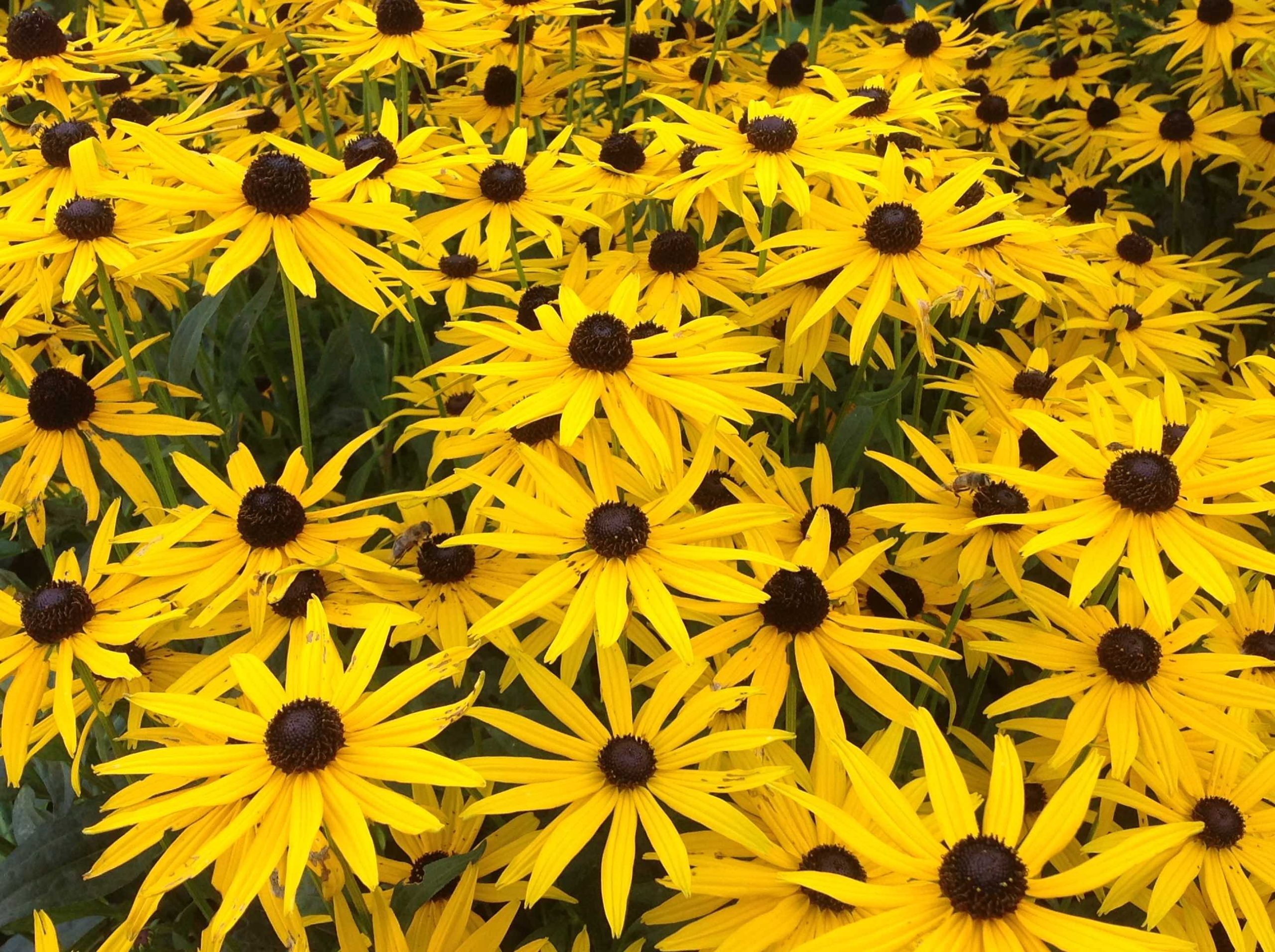With the days starting to get a little shorter our resident gardening expert, Alison Agnew, takes us through the joys of an autumnal garden.
Daisy Days
I’m writing this by the fire at the end of August with monsoonal rain bouncing off the flagstones outside. Can we even remember those days when we cursed the drought and South West Water too. By the way, the August 2022 hosepipe ban will be lifted on the 25th September – jubilations!
What a difficult gardening year! Cold winter, hot dry spring and early summer, cold July and August – what will September bring? Hopefully a balmy end to the summer with plenty of water in the ground and not falling out of the sky. So I’m looking forward to a glorious show of flowers – the September regulars with the addition of catch-ups from delayed Dahlias, Cannas and Salvias.
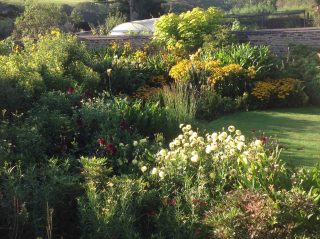
The Hot Garden at Crugsillick reaches its peak in September – a mad jumble of 3m perennial sunflowers, 2m ginger lilies, 1.75m Bidens, 1.5m Cannas and Dahlias and brilliant Rudbeckias and Tigridias on the baseline. Every year I intend to reorganise these beds to make them a bit more coherent but every year they get away from me.
The Bidens in particular – we have two species Bidens aurea Hannay’s Lemon Drop and Bidens triplinervia macrantha. These are a far cry from the little Bidens ferulifolia seen in hanging baskets and patio pots, these Bidens spp may look delicate but are absolute thugs – spreading by underground rhizomes and swallowing all before them. In retrospect I should have treated them like mint and made containing barriers around them but I was naive and let them take hold. Now I spray the front edge of their patch with Round Up every year which slows them down a bit. But – I wouldn’t be without them, such elegant upright stems and ferny leaves and their little cream and yellow daisies open from July to November and last in a vase for a fortnight. Contain them or find a spot where they can romp unrestricted.
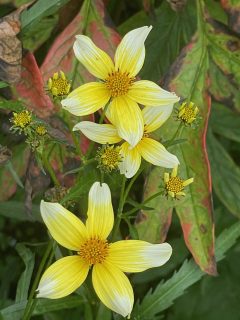
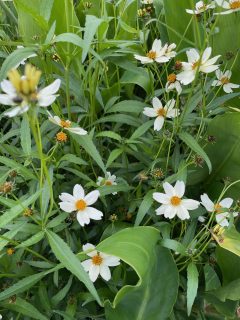
Other invasive thugs that I love none-the-less are the perennial sunflowers. Cultivars of the Jerusalem artichoke, Helianthus tuberosus are the most invasive but flower gloriously golden at up to 3m. For smaller gardens, I’d promote H.Lemon Queen which flowers at a mere 2m with lovely tidy foliage and strong stems. Rudbeckia laciniata has reflexed golden daisies with green centres at the same height but is more lax so I prop it up with stiff ginger lilies.
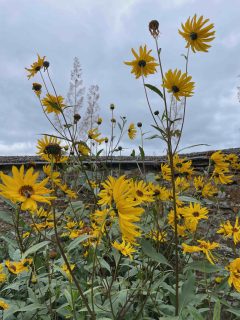
A Daisy Diversion – Ginger Lilies
Ginger lilies never flop so I’ve also used them as supports for Dahlias, Helleniums and Alstroemerias too. They give visual strength to the border too, with their pairs of large simple leaves all the way up the stems. The best one that I grow is Hedychium Tara – 2m high with 30cm long inflorescences of soft orange flowers with deep orange stamens.
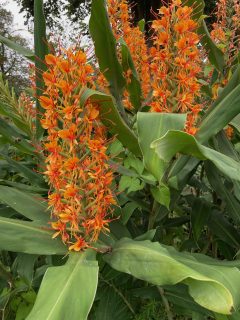
At a mere 1-1.25m, primrose yellow-flowered Hedychium gardnerianum makes useful clumps of props in mid border but some should be planted close to a path where their scent can be most appreciated. H. Devon Cream is similar but cream coloured.
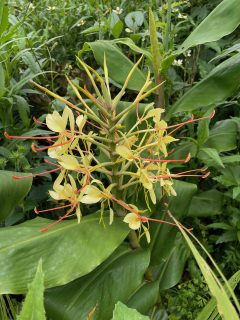
The last to flower here, well into October, is the 1m high red flowered H.greenii. Its flowers are larger but the inflorescences are disappointingly small. They deserve a place for their lovely red stems and backs to the leaves alone.
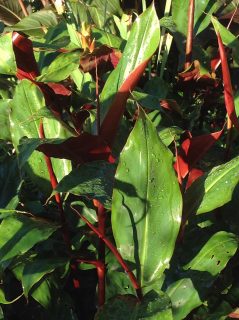
Back to daisies
However, daisies are the flower form that dominates in September so I’ll return to other members of the Asteraceae family. The shorter Rudbeckias make good front of border plants, particularly Rudbeckia fulgida Goldsturm with its stiff stems and eye-popping yellow daisies. Rudbeckia subtomentosa Henry Ellers is a new addition, taller and floppier but with elegant quilled petals. I grew Rudbeckia triloba Prairie Glow from seed this year. Orange daisies fading to yellow at the petal tips – it looks promising but I’ve had to fend off the slugs and snails so assiduously that I doubt it will survive my more usual neglect.
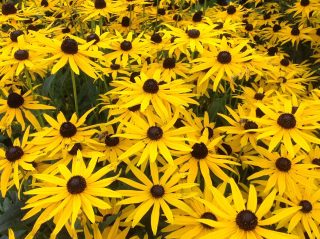
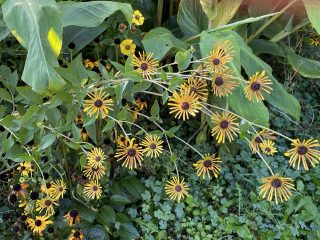
Heleniums
Helenium autumnale cultivars are fantastic garden plants for late summer and autumn. They have sprays of small ragged petalled daisies that flower from July to November at various heights from 30cm to 1.50m in the yellow to deep rust colour range. I’m just trialing Ranchera, a good deep rust compact variety for the front of border.
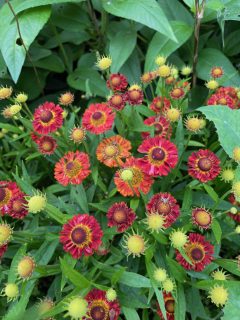
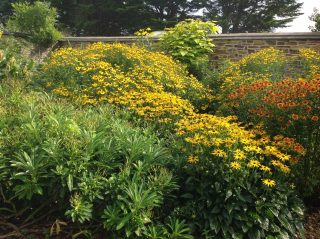
Dahlias
Dahlias are also daisies that have been bred to produce a huge range of flower forms and sizes. I turned to Wikipedia to discover why they are so diverse. The genus has only 49 species and they all come from Central America so there isn’t a huge range of species or distribution but their genetics lend them to generate diversity. Apparently they have eight sets of chromosomes rather than the more usual two and have a large number of transposons which move little bits of DNA about. Breeders have exploited this flexibility to an extraordinary extent producing so many shapes, colours and sizes. I love some of the very double ones – the waterlily and cactus forms that have lost their true flowers in the centre. I love the really loud colours too but some of the huge ‘dinner plate’ ones don’t fit into gardens and belong only on the show bench for their OOH AAH effect! The insects prefer the singles that have true flowers and nectaries and I have several of these. The Dahlias have been late coming this year because of the drought but the Hot Garden will be dazzling with them soon I hope.
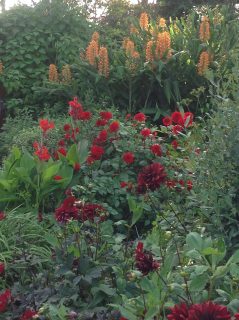
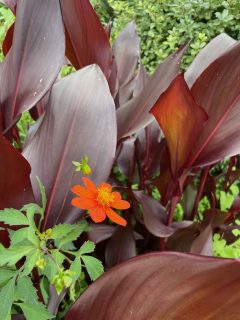
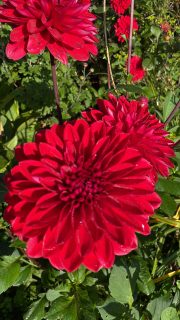
Cutting back
We’ve been late cutting back our evergreen shrubs and hedges this year. Late summer to autumn is fine for Yew but we should have cut back our Pittisporums, Cistus and Ceanothus much earlier. We will go ahead anyway – our Cornish climate is very forgiving – it gives us a long growing season, plenty of time for shrubs to re-sprout and the cold rarely comes on fast enough to damage the soft growth.

